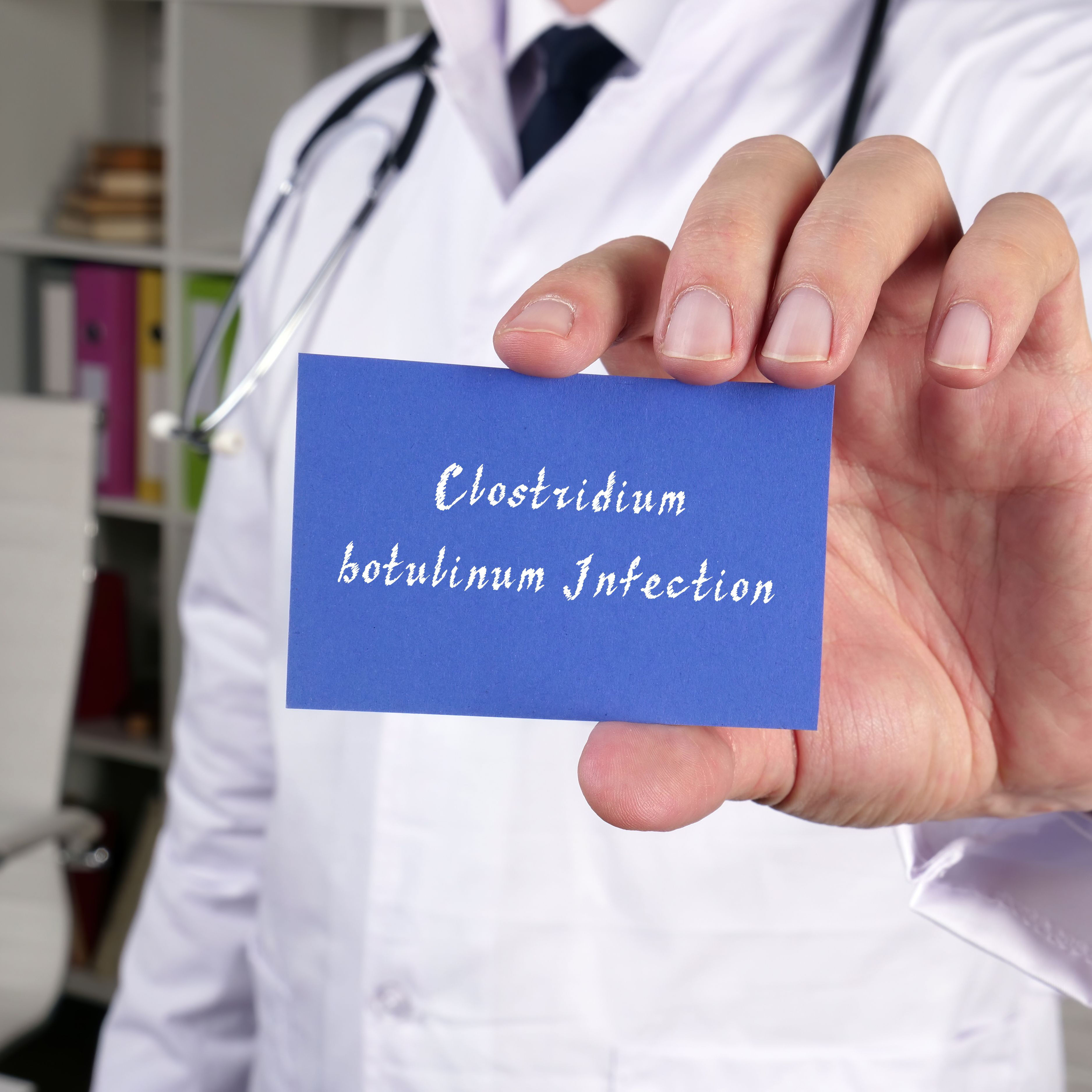
What is the Clostridium botulinum pathogen?
Clostridium botulinum is an anaerobic, i.e. oxygen-free, growing germ which forms spores and thus has a long survival period. These spores are only killed at 100 °C, but germinate again as soon as the living conditions are more favourable. The Clostridium botulinum germ, which occurs everywhere in the environment, produces toxins called botulinum toxins, from which the pathogen's name is also derived . The botulinum toxins are among the strongest known toxins that can have a nerve-damaging effect on humans. Clostridium botulinum produces different toxin types (type A-G). In humans, the toxins A, B, E and F play an important role. In Germany, about 10 to 20 people fall ill with these toxins every year.
What are the characteristics of the Clostridium botulinum pathogen?
Clostridium botulinum belongs to a so-called soil bacterium and occurs in a variety of types and strains. The germ forms very resistant and heat-resistant spores, which can occur in insufficiently heated food. The toxin produced by C. botulinum is thermolabile, i.e. not heat-resistant, and can be killed by external heat exposure of 80 °C for a period of 10 minutes.
What diseases can be caused by Clostridium botulinum pathogens in humans?
Botulinum toxins can cause a so-called botulism disease in humans, i.e. a severe food poisoning. If botulism occurs in an infant, it is called infant botulism. In this infection, the Clostridium botulinum germ colonises the intestine of the infant and produces toxins there. Clostridium botulinum pathogens cannot colonise the intestine if the intestinal flora is intact, which is why infant botulism does not occur in older children or adults .
How can one become infected with Clostridium botulinum pathogens?
An infection with botulism is possible by eating food contaminated with botulinum toxins . The following foods are considered particularly risky because preservation methods are sometimes not sufficient to kill all Clostridium botulinum pathogens:
- Smoked fish,
- mildly salted fish,
- Sausages that are stored in vacuum packs.
Since
Clostridium botulinum is an anaerobic germ,
vacuum-packed storage has a positive effect on toxin formation
and the growth of the pathogen. Since the spores of the germs only die at
temperatures above 100 °C, canned sausages and
vegetables also carry a certain risk of infection.
In contrast, infant botulism can be transmitted by eating honey, whereas wound botulism involves contamination of an open wound with the spores of Clostridium botulinum.
Clostridium botulinum pathogens of type E are mainly found in contaminated seafood or fish, while types A and B can be found in vegetables and meat products.
What are the symptoms of botulism?
Botulism manifests itself at the beginning of the disease through swallowing, speech and visual disturbances. Depending on the amount of poison, the first symptoms can occur between 12 and 36 hours after ingestion. As disease progresses, the following non-specific symptoms may be added:
- Nausea,
- Diarrhoea,
- Constipation
If
the disease progresses further, paralysis of the
and/or respiratory muscles may occur. As botulism is a severe and sometimes
life-threatening disease, it requires urgent
treatment. Affected persons who experience such symptoms
should immediately consult a doctor and seek treatment.
How can you protect yourself from botulism?
Clostridium botulinum pathogens can neither multiply nor produce toxins in an oxygen-free atmosphere, i.e. in a vacuum, with appropriate cooling of a maximum of 7°C. However, it is essential to ensure that the cold chain is strictly maintained for the relevant foodstuffs. In addition to vacuum packaging, food can also be made safe from Clostridium botulinum germs by boiling it down. . Canned vegetables and meat are particularly suitable for this, which should, however, be heated twice. With the second heating, any spores that have germinated can be killed. In general, it is important not to open so-called bombages, i.e. swollen tinned food, to . To prevent infant botulism, infants under one year of age should not eat honey. This does not apply if honey is included in infant formula.
How is botulism diagnosed?
Botulinum toxins can be detected in serum, stool, but also in vomit, wound swabs and in preserved food. Bioassays, mass spectrometry or immunological detection can be used as diagnostic methods. Molecular genetic methods, such as a quantitative multiplex PCR, can be used to diagnose the pathogen, if present. If infant botulism or wound botulism is suspected, a culture detection of the pathogen can make sense . This is done, for example, on blood stains. This can be done at on blood agar, but it takes some time.
How is botulism treated?
In the case of botulism, a so-called botulism antitoxin should be administered as early as possible. If botulism remains untreated, it may even lead to the death of the patient.
Obligation to report
If laboratory evidence of the pathogen or toxin is available, must be notified. The suspicion of an illness or a death due to botulism must also be reported. To prevent further outbreaks of disease, the source of the botulinum toxin should be found to secure contaminated food if necessary.
Therapeutic use of botulinum toxin A
Botulinum toxin A can be used for therapeutic purposes to treat the following conditions:
- excessive muscle activity, such as spasms of the mimic muscles,
- excessive glandular activity, such as abnormal sweating (hyperhidrosis)
